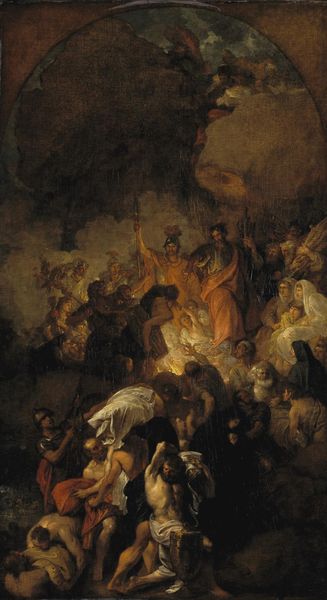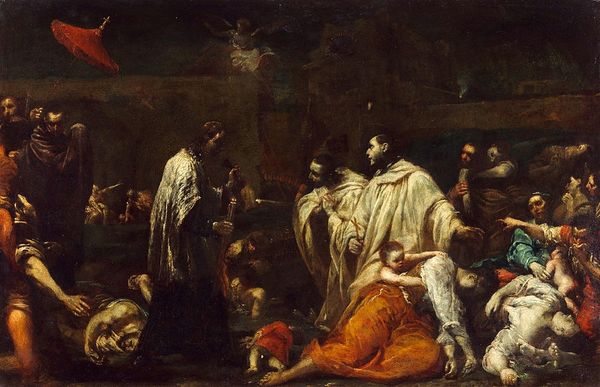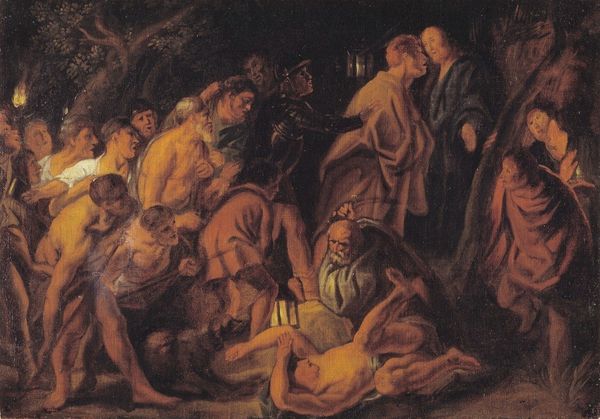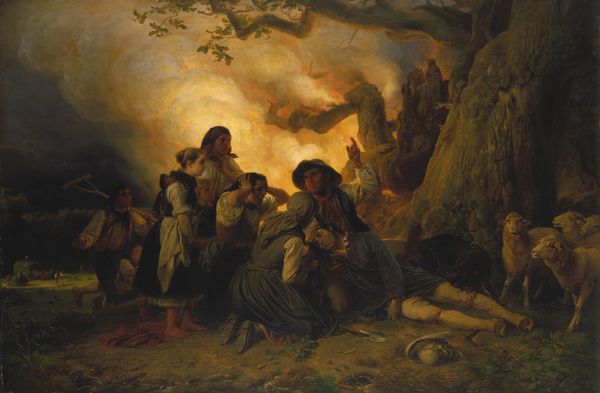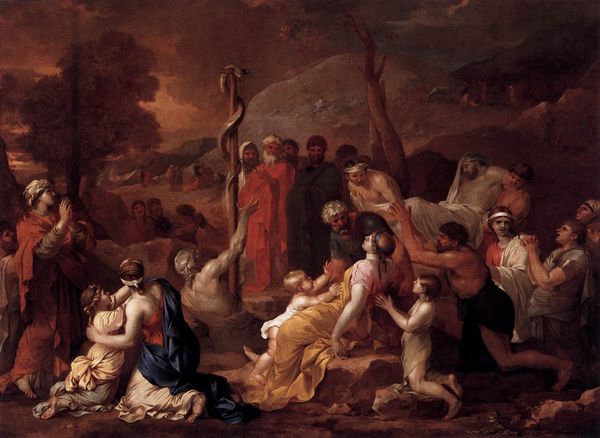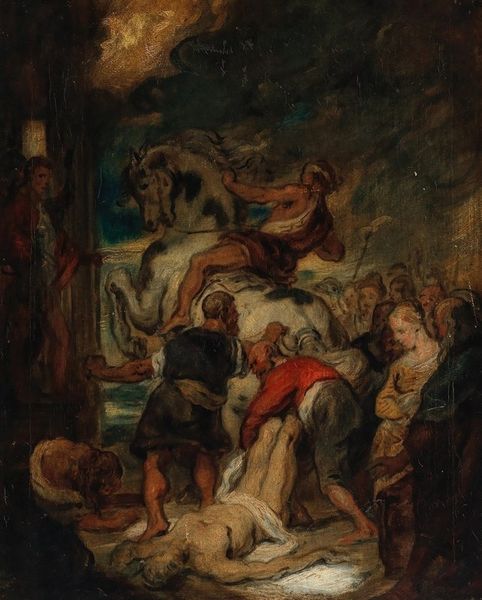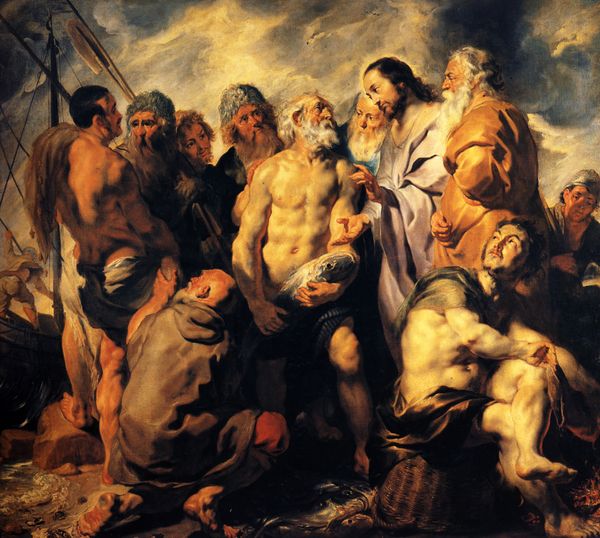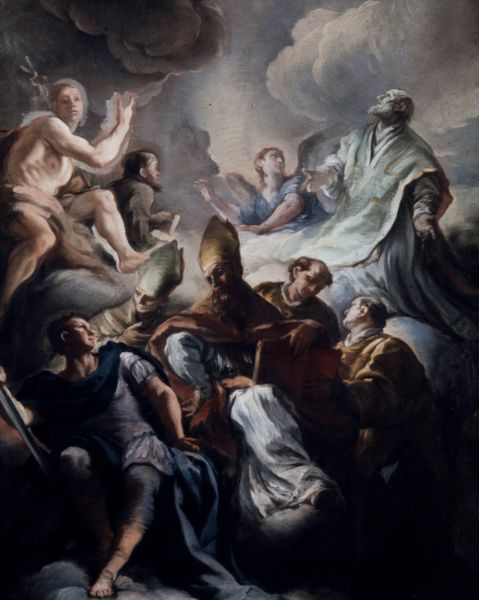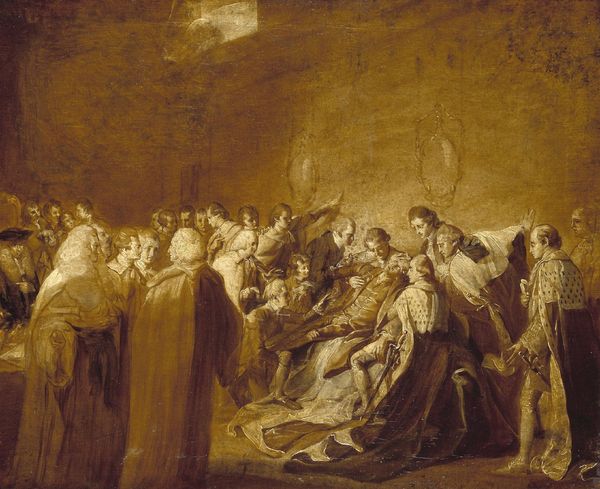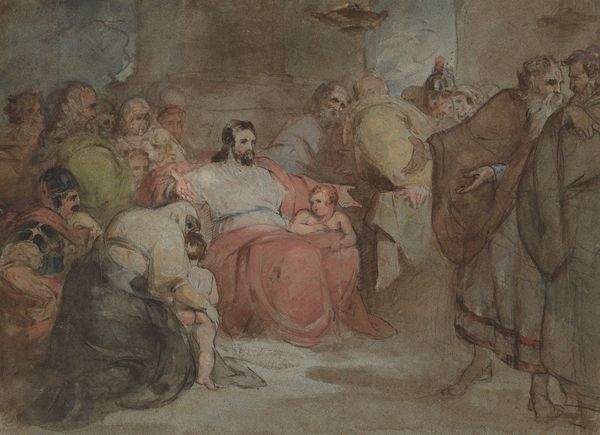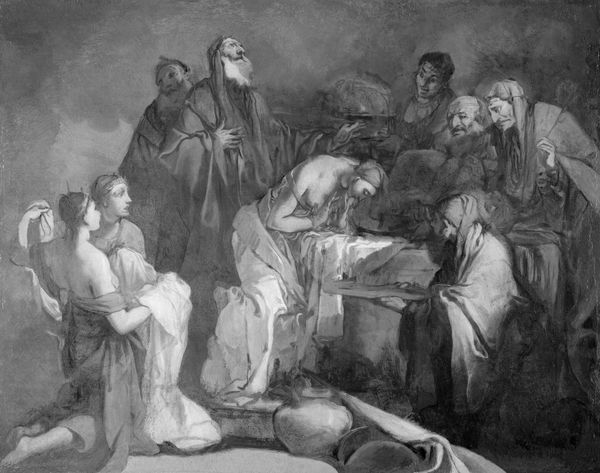
painting, oil-paint
#
figurative
#
narrative-art
#
painting
#
oil-paint
#
landscape
#
charcoal drawing
#
figuration
#
oil painting
#
romanticism
#
history-painting
#
charcoal
Copyright: Public Domain: Artvee
Editor: Here we have Ary Scheffer’s oil on canvas, *Storm*, painted in 1846. My first thought is that it’s a depiction of vulnerability and human drama against the backdrop of raw nature. The huddled figures seem dwarfed by the tempest. What do you see in this piece? Curator: It’s crucial to recognize how Scheffer uses Romanticism's visual language here to discuss not just nature’s power, but also societal structures. Who is vulnerable, and why? Look closely at the figures – their postures, clothing. How do class and gender intersect to define their experience of this "natural" disaster? Editor: I see. The man in military clothing seems like he's maybe in charge. He stands straighter, while the women and children are closer together and huddled low to the ground. Curator: Exactly. And what does it mean that he is upright, exposed? He’s framed against the storm; are we to assume that the storm is also raging within him? Scheffer may be suggesting how power attempts to stand tall against inevitable social upheaval as well as a literal storm. Think of it as a critique of leadership during a period of revolution and social change. Editor: So, you’re suggesting it's less about the storm itself and more about what the storm represents metaphorically within a societal context? Curator: Precisely. This isn’t simply about the spectacle of nature. It’s about the precarity of certain social positions, heightened by external forces. How are these people interconnected and also deeply divided by circumstance? How can we use this image to interpret disaster responses and responsibilities within today's social structures? Editor: I hadn't considered the social critique of this artwork. Now it feels much more relevant to contemporary conversations. Curator: Engaging with art in this way allows us to understand historical narratives and question whose stories get told and how those stories continue to influence us today.
Comments
No comments
Be the first to comment and join the conversation on the ultimate creative platform.

